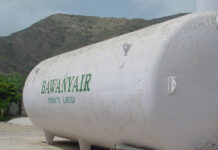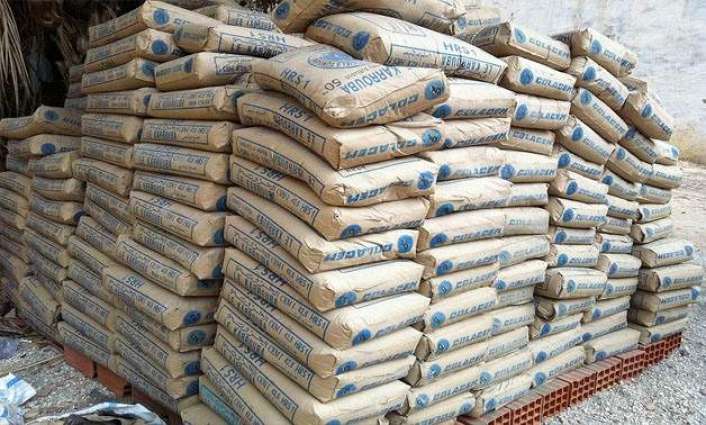The Pakistani cement sector – widely seen as a proxy for home and commercial construction and infrastructure development activity – has seen sales increase by 5% over the first four months of the fiscal year ending June 30, 2020, according to data released by the All Pakistan Cement Manufacturers Association (APCMA), signaling what some analysts believe is at least a temporary recovery in the construction industry.
The news came as something of a surprise to market analysts, who had anticipated a continuation of the slump that had appeared to affect the industry over the last several months.
“The surprise rebound can be attributed mainly to the demand from private sector where housing schemes resuming/starting production played a part,” wrote Shahrukh Saleem, a research analyst at AKD Securities, an investment bank, in a note issued to clients on November 4, 2019.
The data backs up Saleem’s comments: while export sales were up 17% in the first four months of fiscal year 2020 compared to the same period last year, they account for just 17.4% of total cement sales during that period. The much bigger impact came from domestic sales, particularly in the northern part of the country, which saw a 12% increase during that same period, compared to a 31% decline in the southern part of the country.
The bulk of the gains seen by the sector appear to largely be coming from three companies – Maple Leaf Cement Factory, Cherat Cement, and DG Khan Cement, all three of which were able to significantly increase their sales in October.
“As per our channel checks, during the month of October, Maple Leaf Cement (MLCF) and Cherat Cement Limited (CHCC) are expected to post a massive jump in total sales by 86% and 91% to 541,000 tons and 370,000 tons, respectively,” wrote Karim Punjani, a research analyst at Topline Securities, a securities firm, in a note issued to client on November 5. “This was primarily led by healthy domestic sales and aggressive marketing after their capacity additions.”
“DG Khan Cement (DGKC) also depicted strong growth in volumes during October 2019; up by healthy 20% year-on-year to 773,000 tons driven by domestic demand which in turn was up by approximately 28% year-on-year to 644,000 tons,” wrote Punjani.
The cement industry is highly bifurcated, with plants located in Punjab and Khyber-Pakhtunkhwa usually serving only the northern parts of the country and the plants located in Sindh and Balochistan serving the southern part of the country. This is at least in part due to the fact that the cost of transporting cement across long distances – in the absence of reliable rail transportation – can be prohibitively expensive.
However, in recent months, it appears that the price differential between the southern and northern markets is high enough to start influencing that intra-country trade in cement.
“[One] factor playing a part in the North’s growth and both the regions facing divergent trends is players located in the North supplying their product in the South to take advantage of the price difference between the two regions which currently stands at Rs141 per [50 kilogram] bag,” wrote Saleem.
But a big part of the divergence appears to be the fact that construction activity for housing has picked up steam in Punjab but has not quite caught up in the other provinces yet. This appears to be driven at least in part by the provincial government gearing up to remove regulatory obstacles to the construction of new homes in the province, while such projects in other provinces continue to remain stalled.
“Demand from the private sector has spearheaded an exuberant increase in local dispatches of the North after some housing schemes have started construction while the authorities have proceeded to operationalise projects that were stalled previously, according to our correspondence,” wrote Saleem.
One more factor playing a role in cement sales may be the inventory build-up by cement wholesalers and distributors, who were temporarily exempted by the government from the condition of having record the computerised national identity card (CNIC) number of every person with whom they have a transaction exceeding Rs50,000.
Most cement sales significantly exceed that number, but the vast majority of cement distributors and wholesalers are not registered businesses, effectively operating as unregistered sole proprietorships that do not pay any taxes. The government had tried to bring those traders – along with those in other sectors – under the tax net, though the Federal Board of Revenue (FBR) has been struggling in that effort thus far.
The relaxation of the CNIC condition will last until the end of January 2020, following which it is unclear whether the FBR will be willing to extend it or renew their enforcement efforts.
Nonetheless, the good news in October is a welcome change from the third quarter of 2019, when the industry’s revenue declined 10% from the previous quarter, according to data compiled by AKD Securities. The industry swung from profits of Rs1.6 billion in the second quarter to losses of Rs1.7 billion in the third quarter.
The preliminary numbers from the first month of the last quarter of 2019 seems to suggest that the industry may yet recover from its disastrous third quarter. Given how much of the recovery appears to be the result of the temporary lifting of restrictive government regulations, it is unclear how sustainable that recovery is likely to be for the remainder of the fiscal year.



















